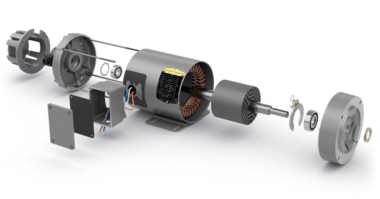California Water Service Company is the largest investor-owned American water utility west of the Mississippi River and serves almost 500,000 customers across 28 operating districts. Maintenance workers, pump operators, facility managers, and more personnel all rely on 45 pump stations that deliver water to residents and businesses.
Cal Water utilizes hundreds of pumps to deliver clean, safe, and reliable water in many clean and waste water applications. There are a number of centrifugal deepwell pumps, booster pumps, chemical feed pumps, and treatment process pumps. Each pump has a unique purpose to pump water, chemicals, or process fluids. Motor horsepower ratings range from a fraction of a horsepower up to 800 horsepower. Pumps are carefully chosen by Cal Water engineers to ensure long life cycle, reliability, and optimal efficiency.
Deepwell lineshaft and submersible pumps are used to pump groundwater from wells. These pumps lift water from underground water tables, which are often 100 to 500 feet below ground. The pumps then push fluid into the distribution piping grid for availability to consumers.
Horizontal and vertical booster pumps add pressure to the system to push water up hills and across the friction of water pipes. They are also used in scenarios which require excessive demand, such as peak usage and for firefighting.
Chlorine and other disinfectants are added to ensure that water is safe to drink. They are added through the use of smaller pumps that are constantly checked and made of chemical resistant materials. In addition, a number of other pumps are used within treatment processes to control pH, remove unwanted chemicals, and operate control valves.
At water treatment facilities, there are two main processes:
- Green sand – This is the name commonly applied to a sandy rock or sediment containing a high percentage of the mineral glauconite. Abandoned in the 1970’s, the process was implemented again when new silica sand core was added which allows green sand to better withstand operating conditions in waters that are low in silica, total dissolved solids, and hardness along while offering higher operating temperatures and higher differential pressures.
- Granular activated carbon – GAC, or carbon in granular form, is made from raw carbonaceous materials. In the activation process, heat is used to produce microscopic pores capable of trapping contaminant molecules in water. The activated carbon is then pulverized and sieved into appropriate and uniform particle sizes. The GAC process is used in many applications including dechlorination, reverse osmosis, removal of VOC’s, and even the removal of color, taste, and odor
For a better look at Cal Water, visit the Behind Scenes section.



